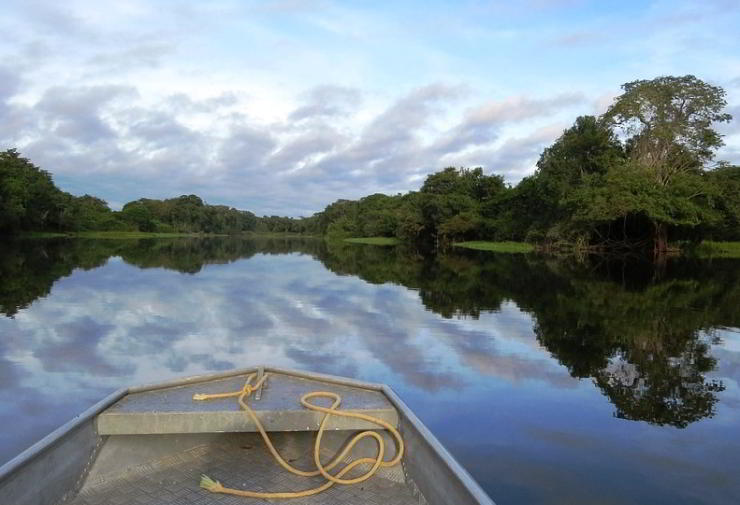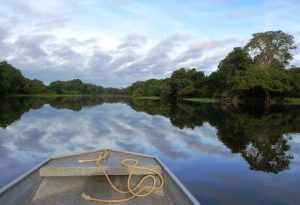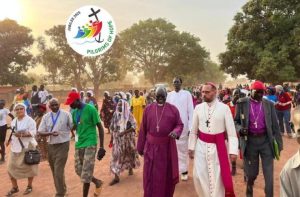The Guarayo people are an indigenous group who live in eastern Bolivia. The current Guarayo population in Bolivia is 12,000. They are predominantly agricultural people, and their culture and way of life are primarily based on the land. Here we take a look at their funeral rites and final fate. The ten tests.
The Guarayos believe that life continues beyond death, in what is known as the Land of Tamoi, the Great Ancestor. To do so, they must make a long journey, full of trials. During the journey, the Guarayo must demonstrate everything he has learned and what he has been in this life. He will have to submit to ten trials along the way to the land of the ancestor.
When the Guarayo dies, all his people prepare the baggage for the journey, with flowers, fruit, bows and arrows, without neglecting the sweet staff, which will be one of the most precious gifts to the ancestor. Generally, they do not cover his face, because if they did, the spirit could not leave the body. Another detail is that they do not put him in a coffin, because they would suffer a lot from the heat; for this reason, they use the hammock, which is cool and pleasant.
After the burial and when the soul of the Guarayo leaves, two paths open up for him: the one to the left, wide and full of flowers, is the path of the carais (of the bad). The other, on the right, is a narrow path full of difficulties: it is the road of the Guarayo, along which he begins the march towards the promised land. But along the way he meets with several trials that will put his journey to the test.
In the first trial, the soul of the Guarayo finds itself faced with a deep river that it cannot cross; only an alligator can transport him to the other bank in exchange for the performance of a beautiful chobena (typical music of the Guarayo). If the poor Guarayo has not learned to play it, he will not be able to continue his journey.
Once the first obstacle has been overcome, the second stage takes place, where he encounters another river. This time, however, it is not an alligator that must cross it, but a very smooth box. Here the Guarayo must put into practice all his skill and agility; otherwise, he risks remaining stuck there forever.
Once he has passed the second test, there is the third: he meets with a worm very similar to a viper called a zoiramo! This animal will demonstrate whether he has been good or bad in life. If he has been bad, he will be used as food for the flowers of the jungle and, ultimately, to feed the flora and fauna of the place.
In the fourth stage, he finds himself in front of a dark place called the Pintú. Here he must light a straw and defend it from the bats: if he fails to do so, he disappears forever. Therefore, everything will depend on what they have learned in their earthly life.
In the fifth stage, the Guarayo comes to a leafy tree under which a river flows. Here the Guarayo washes himself and then hunts colourful birds with a bow and arrow, but only to pluck out their longest feathers to bring as a gift to the ancestor.
After passing the fifth test, he undergoes the sixth in which he finds two rocks called itacuru. They are constantly striking each other so the Guarayo must be agile enough to pass through them without getting trapped.
In the seventh stage, he finds himself at another river where it is necessary to get into a canoe, but only if they have been good in everyday life; otherwise, they risk becoming food for voracious piranhas.
In the eighth test, the Guarayo finds himself faced with a large buzzard called the uruguguazu that examines him carefully to check if his lower lip, nose and ears are pierced. If he finds any detail that is not consistent with everyday life, it will point him in the wrong direction.
The ninth stage is close to the goal, that is, the promised land, but the test continues: here he meets a horrible monster who takes hold of him and tickles him a lot; the Guarayo must not laugh; otherwise, he will be eaten by the monster.
The tenth test is the last stage of his journey. In this situation, the soul of the Guarayo must cover his ears and not look at the grasses: if he does so, the invisible spirits will lead him to a place with no way out. For this reason, the soul of the Guarayo must not forget that this tree knows their entire history; it is a thousand years old.
After overcoming all those dangerous obstacles, the Guarayo, finally happy after having overcome all the tests, arrives in the beautiful city where happiness reigns. The ancestor welcomes him with deep affection, purifying him of all illness and dirt. He dresses him in all the usual decorations, so the Guarayo becomes a very handsome young man and is rewarded with a beautiful woman and a new home, where he will live eternally in that beautiful world, drinking a lot of chicha.
To reach this goal, the Guarayo must learn many things: how to be good and just and lead a dignified life. This is an opportunity to prepare for the future; otherwise, he will not reach the fullness of life, or, on the other hand, he will lose the opportunity that has been given to him. (Jhonny Mancilla Pérez) – (Photo: Pixabay)








